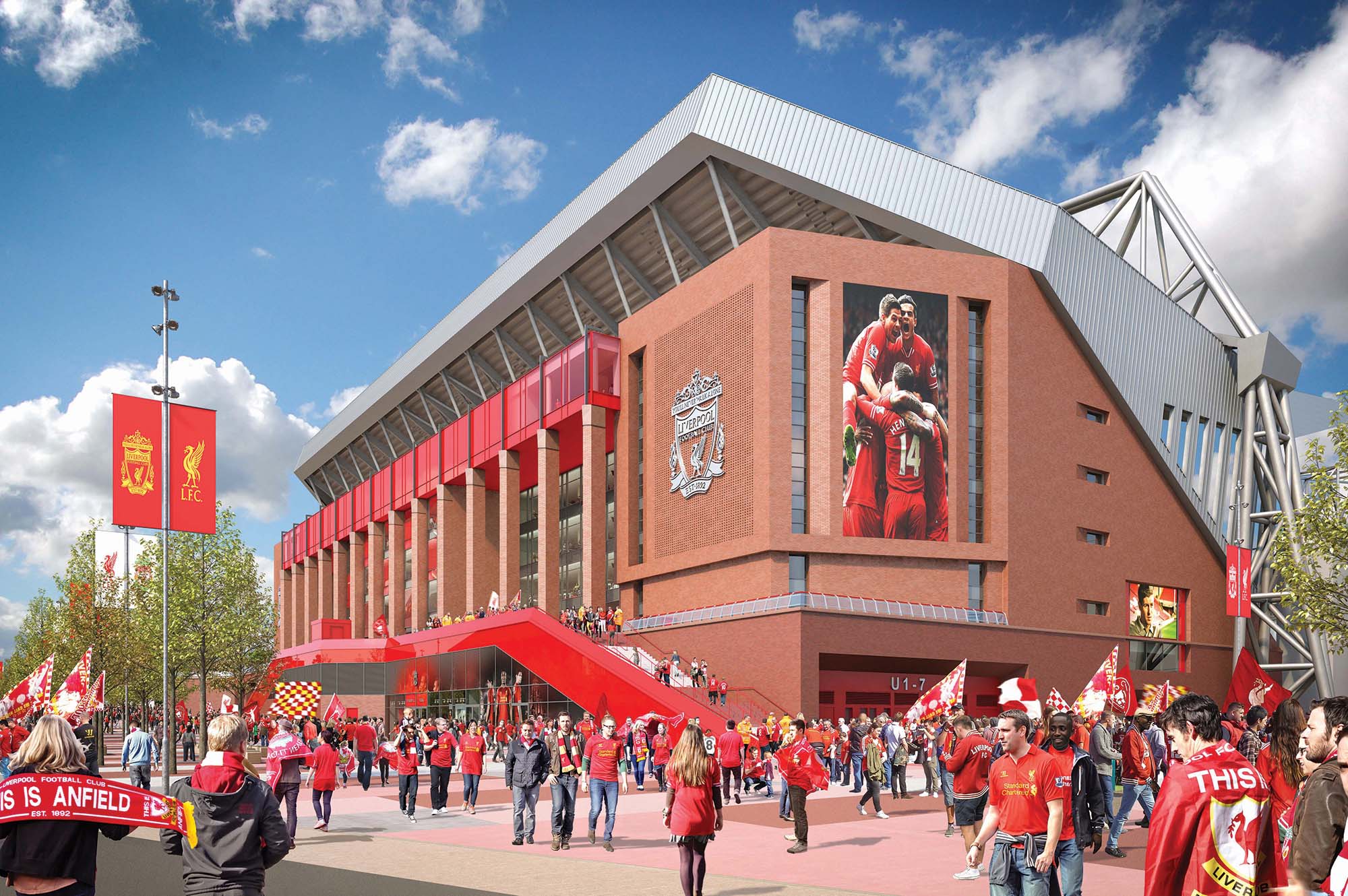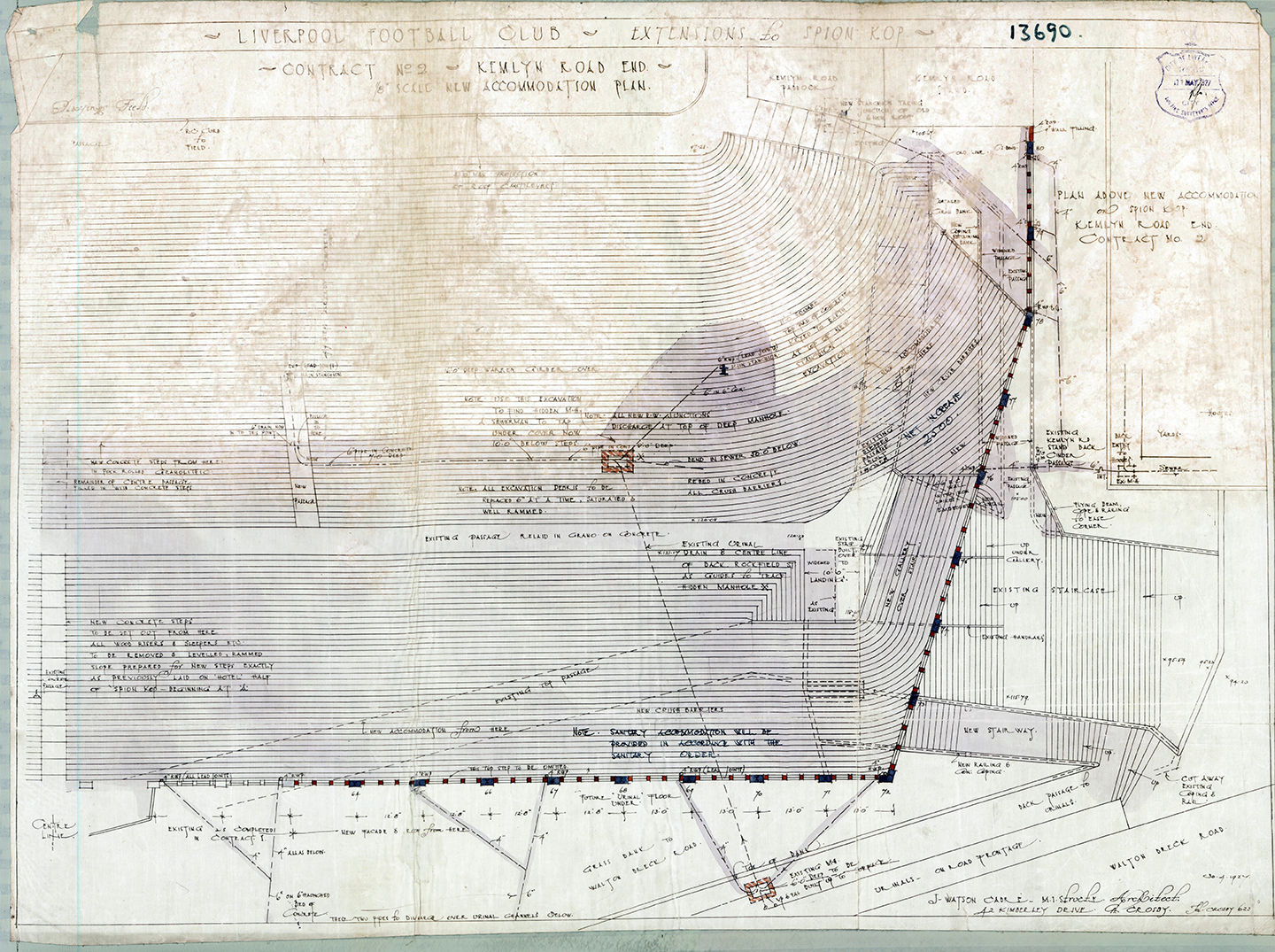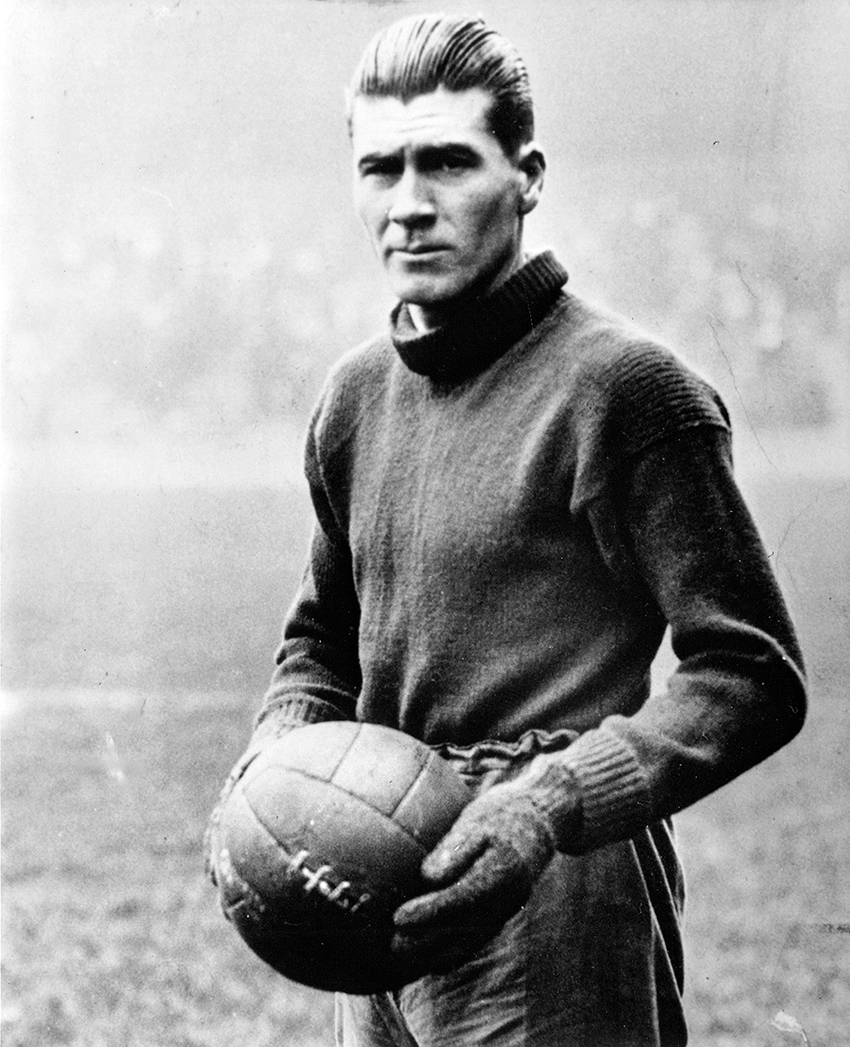Part Two: a venue fit for a king
By the end of the first decade of the 20th century, Anfield was considered to be one of the best football grounds in the country. This was a feeling endorsed by the Football Association when it was chosen to host the 1908 FA Cup semi-final between Newcastle United and Fulham. Back then Fulham were a non-league side and slipped to a 6-0 defeat. The stadium remained more or less the same for a while, and in 1921 it hosted royalty when staging another FA Cup semi-final between Wolves and Cardiff City. King George V and Queen Mary had stayed over in the city after attending the Grand National at Aintree and were guest of honours for the Anfield clash. The game ended goalless with Wolves winning the replay held at Old Trafford four days later to reach the final where they would lose to Tottenham Hotspur.

Gimme shelter
As spectacular as the views from the back of the Spion Kop were, they also left spectators exposed to the elements. And although warmth was generated from the proximity of other fans, the winds blowing in off the Irish Sea meant the matchday experience from the vast terrace was often a chilly one. Even so, fans continued to turn out in their droves and were rewarded for their loyalty with a championship-winning team in 1922 that went on to successfully defend their title 12 months later. As the 1930s loomed, the Liverpool board of directors decided it was time to give something back to the supporters who cheered on their team through the wind and the rain. In 1928 it was decided that the cinder and ashes would be replaced and steps would be spruced up by paving them in concrete. The most important development however saw the directors give the green light to the construction of a huge roof. Tom Crompton, recently installed as club chairman, said: “Wet or fine, the supporters have loyally filled their places and it has given great satisfaction to the directors to now make them as comfortable as possible with every protection against the inclement weather.”
Grand designs
It came as a major surprise that the club decided not to enlist the services of groundbreaking football architect Archibald Leitch in the new ground works. Leitch, who had been a pioneer in football stadium design in the early 20th century, had played a prominent role in the look of the early Anfield stadium but the board decided to plump for a local architect instead. Crosby-based Joseph Cabre-Watson's background had been mainly in designing private housing, but he put his heart and soul into drawing up an acclaimed scheme which came at a cost of £38,000. Upon completion it allowed fans to watch the game in more comfort and the encased structure meant it also helped generate a greater noise. In years to come the Kop would become a wall of sound, roaring the Reds on to new heights. The clever building plan also meant that up to two-thirds of the possible 28,000 supporters who could gather on the terrace could watch the game unhindered by a single stanchion.


